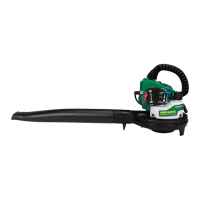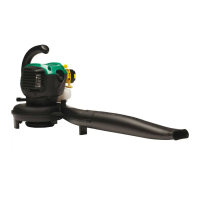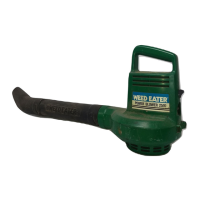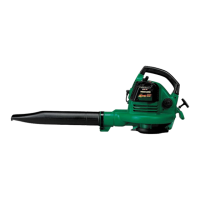Do you have a question about the Weed Eater FL1500 LE and is the answer not in the manual?
Understand and follow all warnings and safety rules before operating the unit.
Prepare your work area and yourself, including wearing appropriate safety gear.
Guidelines for safe handling, mixing, and storage of flammable fuel.
Instructions for safe operation, including environmental considerations and proper use.
Recommendations for regular maintenance and servicing to ensure safe operation.
Step-by-step instructions for attaching the blower tube to the unit.
Familiarize yourself with unit controls, adjustments, and safety features before use.
Requirement to wear hearing protection due to sound levels associated with operation.
Guidance on operating power equipment during acceptable hours to avoid disturbing others.
Tips to minimize noise, such as using lower throttle speeds and fewer equipment pieces.
Advice on preparing the work area and using the blower efficiently to conserve water.
Be aware of surroundings, including children, pets, and open windows, when operating.
Guidance on using the blower tube extension for optimal air stream performance.
Instructions to clean up debris and dispose of it properly after using the equipment.
Critical information and safety warnings regarding fueling the engine before operation.
Correct posture and placement of the unit for safe engine starting.
Procedures for starting the engine when it is cold or has run out of fuel.
Procedures for starting the engine when it is already warm.
Troubleshooting steps for engines that are difficult to start or may be flooded.
Inspect the unit for loose screws, nuts, and bolts, and check for worn parts.
Identify and address any damaged or worn components before operation.
Post-use inspection and cleaning of the unit and its decals.
Instructions on how to clean the air filter for optimal engine performance.
Guidance on replacing the spark plug annually for easier starting and better running.
Check muffler and screen for carbon buildup to prevent fire hazards.
Information regarding carburetor adjustments and idle control.
Steps to prepare the unit for long-term storage at the end of the season.
Advice on managing the fuel system, especially regarding gasohol and long-term storage.
Using fuel stabilizer to minimize fuel gum deposits during storage.
Procedure for lubricating the engine cylinder for storage and replacing the spark plug.
Outlines the duration and scope of the warranty for household and commercial use.
Specifies conditions and parts not covered by the warranty, including wear and improper use.
Provides contact details for inquiries or claims regarding the product warranty.
Notes how state laws may affect warranty rights, such as limitations on implied warranties.
Explains the warranty for emissions control systems in compliance with state and federal regulations.
Owner's duty for maintenance and warranty duration from purchase date.
Details which engine parts are covered or excluded under the emission warranty.
Covers diagnostic labor, consequential damages, and impact of modified parts on warranty.
Procedures for filing a claim and locations for obtaining warranty service.
Information on emission-related parts, their maintenance, and the warranty for replacements.
| Brand | Weed Eater |
|---|---|
| Model | FL1500 LE |
| Category | Blower |
| Language | English |












